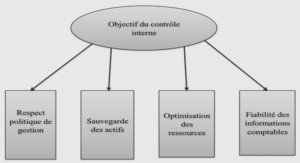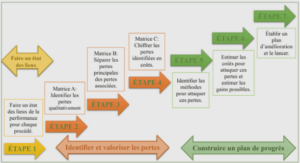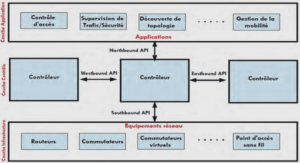Elizabeth Cady Stanton and The Seneca Falls Convention (1848) For American Women’s Civil and Political Rights
Judith Sargent Murray and Her Theory of Gender Equity
In the years following the American Revolution, a number of women, most notably Judith Sargent Murray, followed their better known English counterpart Mary Wollstonecraft in arguing for the extension of Enlightenment precepts about human freedom and individual development to women. In “On the Equality of the Sexes”, for example, Murray attacks the sexual double standard by cleverly using it as a way to argue that society already accorded women a great deal of strength. She built on that idea in order to contend for women having greater access to education by focusing on their rational capacities as implicitly being acknowledged by society. Her argument can be read as part of what was described as “republican motherhood,”. A shift in emphasis following the Revolution where women’s role in shaping the next generation came to be seen as key to developing the virtuous electorate necessary for the American experiment in self–government to succeed. From Murray’s position, for women to fulfill that role, they had to take advantage of equal access to education and had to be free to develop their minds as fully as they can. Murray did not, as later American women writers would, insist on opening political and professional doors for women but rather kept her focus largely on educational, intellectual and spiritual opportunities in terms of self-improvement and self-development. Murray’s hoped for a change in American culture that included a strong central government which would endeavor to direct the social message of equality in order to reflect the change of the role of women in society. Murray was fortunate to grow up in relative privilege and was exposed to political issues and philosophies more than many women of her era. Therefore, her positions on matters of equality were the result of spirited debate and study. Hurd-Smith noted that, “Murray’s mature sentiments about gender roles were a product of her particular experiences and of the transatlantic literary and philosophical tradition that characterized the Age of Enlightenment”.100 Murray considered the rights of women to be crucial in establishing an American society worthy of a reasoned people. 100 Bonnie Hurd-Smith. From Gloucester to Philadelphia in 1790: Observations, Anecdotes and Thoughts from the 18th Century Letters of Judith Sargent Murray With a Biographical Introduction. Cambridge, Massachusetts: Judith Sargent Murray Society. Having developed that opinion rationally through her own study and experiences, Murray embodied the spirit of the Enlightenment in this regard. As the spirit of reason swept across America in the lead up to the Revolution, surging political discourse led to a closer examination of religious doctrine in some quarters. The new, more liberal religious philosophy of Universalism began to gain acceptance in New England among many who questioned the harsh orthodoxy of Puritanism. The Sargent family, finding themselves attracted to the egalitarian nature of Universalism and its message that salvation was available to all, reached out to the liberal theology’s founder John Murray who accepted their invitation to preach101 . Although the Sargent family held a position of great esteem within their Puritan community, they questioned Calvinist theology’s premise of God’s “grace” rendering eternal salvation available to a select, predetermined few. They were further troubled by laws requiring financial support of the community’s Puritan meeting house as a civic duty for all, regardless of religious affiliation. Feeling that they could no longer abide by supporting a system in which they lost faith, the Sargent family found themselves breaking all ties with First Parish Church. Biographer Shiela Skemp underscores the significance of the family conversion in the following “They were abandoning their past, rejecting a tradition that had accorded them a privileged place in the community and separating themselves from the intricate network of social and spiritual relationships that shaped their world”.102 The Sargent family’s decision to risk their social status and reputation in pursuit of a faith more in keeping with their values speaks to the premium placed on intellectual curiosity in the Sargent household. That bold move was reflective of their liberal nature and the values they imparted to a young Judith. Those values led her to question society’s views about women in religious and civic life. Judith Sargent Murray heavily relied on the Universalist notion of equality in forming her ideas on the extension of equality to women. In arguing that women possess equal intellect to men, Murray’s “On the Equality of the Sexes” admonishes men against the assumption of superiority by offering a theological perspective that: “Our souls are by nature equal to yours; the same breath of God animates, enlivens, and invigorates us; and that we are not fallen lower than yourselves”.103 Murray pointed out that while men and women were not equals in their corporal existence, no such distinction exists on a spiritual field. Even the most dogmatic tenets of Calvinism did not argue that men were more inclined to salvation than women. Murray’s thesis follows that if God thought women could be entrusted with salvation, surely they could be trusted with intelligence. Skemp supported that argument in writing that, “Murray’s view of women’s intellectual equality was a logical development of her religious and philosophical beliefs”.
CHAPTER II: RELIGION AND ANTISLAVERY MOVEMENTS CONTRIBUTION
It would be simplistic or even incomplete to deal with the women’s rights movement and the suffragette in the United States of America without talking about the religious influence that they underwent. Even though they did not have the same beginnings and endings, women sometimes rejected some religious basic beliefs but they later drew from religion some principles to back up their positions on the necessity to grant women the same rights as men. It is undoubtedly acknowledged that religion occupied and keeps on playing a crucial role in women studies. On the one hand, religion was regarded as a source of oppression but, on the other hand, some religious beliefs or principles also contributed to the empowerment of women. These two parameters would be taken into account in the study of the relationships between religion and the woman question in the United States of America. In the United States of America organized religion was considered by some women rights activists as the major provider of oppression on women simply because women loudly declared that the bible which was the constitution of religion was systematically male – oriented. From this viewpoint, all the teachings and messages of the bible go against the fulfillment of women. It is in this perspective that Elizabeth Cady Stanton attempted to deconstruct the “Bible”, which was written by men and interpreted by men with their desire to dominate women by writing her controversial work entitled the “woman bible”. She rewrote the bible by redressing the wrongs that shaped women’s destinies and therefore relegated them to a subordinate position for ages. Controversial as it was, her work greatly influenced the struggle for women’s rights. In our attempt to study the contribution of religion to the women’s cause, our analysis we will also focus on the principles of Quakerism that favored and accepted women not only in sharing power with them but also in admitting them in public life. They were taken from the private spheres to the public spheres. In those religious branches, women were allowed to participate with men in many activities that women were previously prevented from attending. In so doing, it is not going to be a separate analysis of each of those religious branches but a global study of the principles that they shared and that impacted on the liberation of women in the USA. 63 The antislavery movements captured by far the greatest amount of American women’s attention. Although some women came to the antislavery movements with prior experience in reform, for many women, the antislavery movements provided their first taste of public political and social activism. Out of the active communities of women on both sides of the Atlantic grew an exchange of letters, ideas and visits that formed the base of the first transatlantic women’s movement. It was also during those years that women came to participate fully in the movement in the US, with Angelina and Sarah Grimké speaking to mixed crowds in public meetings, women publishing political tracts and signing petitions to government. The crowning achievement of the transatlantic movement was the 1840 World’s Antislavery Convention held in London, but “the woman issue” rather than slavery was the center of that convention. Several dozens American antislavery activists travelled to London in June 1840 to attend the convention.
The Principles of Quakerism as Leverage to Promote
Women Concerning the direct influences, Quakerism significantly influenced the Seneca Falls Convention on various ways. Besides, some women’s activists such as Lucretia Mott and Martha Coffin Wright inherited from Quakerism their rejection of slavery on the one hand; they also learnt from them how to lead public actions on the other hand. The desire to abolish slavery through public actions for Quakers was the same strategy for women to demand their rights. In the field of space, like Quakerism, the women’s rights movement sprung up in the fertile ground of central New York. That area was known for producing and disseminating reforms that favor women’s rights conscience. Those reforms burned across the landscape through village, town, and city like a prairie on fire. A progressive branch of Quakers lived in and around Waterloo, New York where the Seneca Falls Convention took place too. At a time in America when women virtually had no rights, those Quakers provided model relationships where men and women worked and lived in equality. During the Great Separation of the Quakers 1828-1829 Mott sided with the Hicksite Quakers. That decision would shape her fundamental reform ideology. The Great Separation resulted in the Hicksite Quakers abandoning the “Quietist theology,” a tenet that had kept Quakers isolated from the activities of the non- Quaker world.136 As they repudiated the belief that had prevented them from engaging in reform or entering into « mixed associations with the world’s people, » Hicksite Quakers became a fundamental aspect of the reform community. Mott’s presence in Garrisonian abolitionism and other reform communities reflects the Hicksite commitment to action. As Mott has declared she has no intention “of submitting tamely to injustice inflicted either on me or the slave. I will oppose it with all the moral powers with which I am endowed. I am no advocate of passivity. Quakerism, as I understand it, does not mean quietism”.Hicksite Quakers increasingly focused on the central belief that within everyone dwelled an inner spirit or an inner light that acted as a moral guide to highlight the social problems of the period. The light for those Quakers emerged as a social conscience, a method of preventing many Quakers from disregarding the social problems of the period and leading them directly into the reform arena. The importance of the inner light is clearly evident in this extract as it is described as the: “Spirit of the Truth, God, Christ, the holy spirit, the seed of God, the Light which lighten every man that cometh into the world”.139 By dominating the lives of many Quakers the inner light shaped their actions and sanctified their reform activity. Mott focused on that Hicksite belief throughout her reform career, encouraging those that listened to her lectures to use their own “Inner Light” to seek the truth and to examine their own actions.140 Mott’s decision to separate from the Orthodox Quakers was not only influenced the focus of her own beliefs but also in the long term left a lasting impression on those who heard her speak, including Stanton. Mott’s insistence on focusing on the truth as her inner spirit, led her to attack the methods that she felt the Church and State employed to control society. Mott’s connection with the Society of Friends further shaped her philosophy concerning the function and role that she perceived that women should play in society. The Hicksite teaching that the inner light existed in all humans was central to how Quakers viewed women in society. It led to the belief that women had spiritually been equal to men.142 Spiritual equality allowed Quaker women the opportunity to be ministers within their faith, granting them access to public roles that most of Mott’s female peers in other religions were denied. During that period Mott would be held as an example not only as a respected female Quaker Minister, but also as a woman with an accepted public role in society. However, even within the Society of Friends women were not treated with total equality. Quaker women while allowed to speak out in public had still been structured in separate organizations from those of Quaker men. However, that separation of male and female spheres spread beyond the immediate Quaker arena onto the abolitionist platform where many Hicksite Quakers spoke out.
Introduction |






